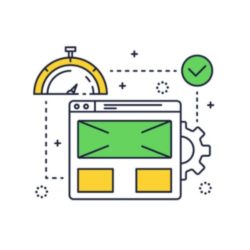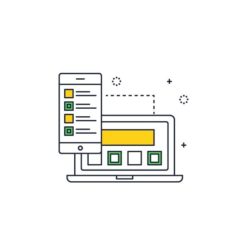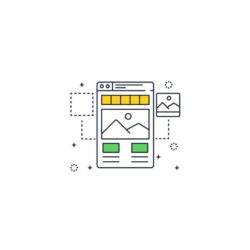There are many techniques to take into consideration when optimising your site. Most importantly you need to know your audience and do research or tests to find out what is best for you. If you don’t then you’ll lose business – however this is why Fifteen Design is here to help. We can make sure that all of the below and more are what you need (we will do all the leg work) to optimise your site and win you more leads.
Let’s start.
Navigation
There is an extensive amount of research out there which show that approximately 70% of users use the navigation bar of a website (the menu options that sit on the top of site). What are the other 30% doing? Well, these users are using the search option. Therefore having a navigation bar is quite important especially if you have key services or offerings to show – don’t stick them behind a burger menu icon.
If the wording within the navigation isn’t right – for example, then you aren’t really showing off your site. Keywords go a long way to ensuring your audience finds what they are looking for so optimise your menus to match demands.
Mapping these keywords can also enhance the usability of the site and determine which terms work effectively on the navigation bar.
Top tips:
- Make sure not to over clutter the navigation.
- Up to 8 options that are easily understood
- Options should contain no more than three words
- If your site is large enough add in a search (but is it relevant?) – which then will cater for the other 30%
Search
Searching a website that has a huge variety of services or products is more likely to have a search option within the navigation. Having a search allows your users to quickly run through the site with ease and efficiency. Or if you’re feeling really brave – like Google – predict what a user is wanting to search for which really would enhance the journey allowing for quicker navigation of your site.

One key focal point for any search function is the magnifying glass icon. This icon is universal and transcends languages. This is one of the most common and best-practised terms to use for having a search.
Top Tips:
- Make sure is visible enough for users to see it
- Use Keywords for your search
- Use this and the navigation option for both user groups
- Turn on search analytics in Google analytics
Carousels/Hero Images
There are many reasons why it’s good to have a carousel and one of those is to allow different information to be displayed in the most viewed section of the site. Yet again it’s also pretty good for SEO.
But… and this is a big but, research suggests that only just 1% of users click into the images of the carousel hero image.
Often enough these are a big distraction and most users forget the information within this slide, so from a usability point of view, they do come with risks, including memory usage and site speed. With that, it’s very difficult to get the balance of timing correct for the carousel, as often enough users don’t get a chance to see the next few slides as they have already scrolled past it.
Top Tips:
- Use a static banner
- Have a banner that shows 3 or 4 interactable options.
- If you do feel having one is the right option, make sure that each new slide has the considered amount of timing between them.
- Have 5 or fewer slides.
- Auto rotating sliders/carousels shouldn’t be used, but instead, use a slider where the users have full control of clicking through allowing them to then click into the banner
Call To Actions
Having a unique call to action gives your users a clear signpost to make easy decisions such as completing an enquiry or a new purchase. One way for this – which most sites adopt, is using a CTA button allowing users to click.

A Call to Action button should be seen on nearly every page so if a user lands on a page organically there is something there for the user to enquire or purchase.
Top Tips:
- Enhance the CTA with colour.
- Make sure that the colour is contrasting enough.
- Making them look clickable enhances the click rate.
- Ensure that there’s plenty of padding/spacing around the button which helps focus the button for the user.
Forms
With the help of a CTA button, there is another form of a call to action. This is a form. These result in users completing a long or short form. This form skips the process and jumps straight to the endpoint. This ending could be an enquiry or even to make a booking for a table.

Some forms are often, by the decision-maker, overlooked. This could be the point when you’ll see drop-offs on the site. If a form is not clear or not concise then a user will also overlook this and will not enquire or book.
Top Tips:
- Don’t over complicate a form with too many fields.
- Field labels should be visible allowing a user to know what they are entering.
- If all fields are mandatory you don’t need to tell a user. Grey out the button – allowing for validation…
- However, if one field is optional – say that it’s optional.
- Grouping related fields together.
- If a form is long, give your users a progress bar.
- Validation is key. This allows for quick feedback for a user to go back and make sure they have done it right before getting to the end and then it’s wrong.
Conclusion:
Again there are many best practices on optimising your site. Make sure you’re researching to make sure that these tips and more but Fifteen are here to help with all that. We can do the research that will help your site, best user experiences best practice and optimises your site to enhance the visibility of your business to the larger world – giving you more leads.
